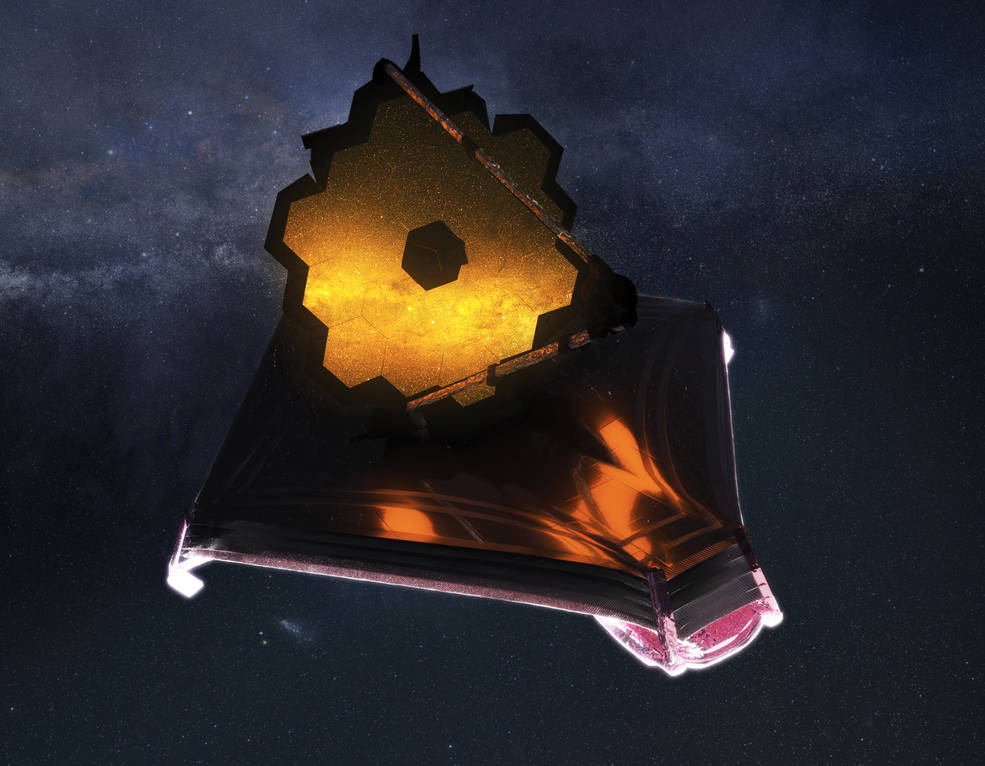Dying Stars and Dancing Galaxies: Images from the James Webb Telescope
Written by Prakriti Panwar, a first-year undergraduate student
The James Webb telescope, which is the world’s largest and most powerful space telescope ever built, recently captured the first full-color image of the cosmos (the universe)
Written by Prakriti Panwar, a first-year undergraduate student
The James Webb telescope, which is the world’s largest and most powerful space telescope ever built, recently captured the first full-color image of the cosmos (the universe)

The telescope was sent into orbit in 2021 from French Guiana (an “overseas territorial collectivity” of France on the northeast coast of South America). The telescope is a joint collaboration between the US, European and Canadian space agencies and was designed to be a successor to the Hubble Space Telescope (HST).
Who is James Webb?
James Edwin Webb was an American who served as a very well-known administrator of NASA during the 1960s. The main reason he is famous is that he was mainly responsible for NASA’s Apollo program and its success.
The Apollo program was NASA’s human spaceflight program which led to the landing of the first humans on the Moon in a mission called Apollo 11 in 1969.
Tell me about this telescope
The telescope has unique infrared capabilities that allow it to capture detailed images by piercing through cosmic dust clouds of the universe. It can detect near-infrared and mid-infrared wavelengths, which is the portion of light beyond the range visible to the human eye.
The pictures captured by the James Webb telescope revealed a dying star and even dancing galaxies!
Dying star
One picture depicts “clouds of dust and rays of light” surrounding the Southern Ring Nebula, a dying star 2500 light years away from Earth. A nebula is a “giant cloud of dust and gas in space.”
The 3-D view of the Southern Ring Nebula looks like two bowls placed together at the bottom, opening away from one another with a large hole at the center, according to NASA. The “local landscape” is shaped by two stars locked in a tight orbit.
The brighter of the two stars determine the look/appearance of the nebula. When the stars continue to orbit each other, they “stir the pot” of gas and dust, which is what forms the beautiful asymmetrical patterns.
These facts captured by Webb will allow astronomers to understand the nature of molecules present as well as their position in the “shells of gas.” These details, which are from the later stages of a star’s life will help astronomers understand the evolution of stars and the transformation of their environments clearly.
Dancing galaxies
The James Webb telescope also revealed a picture of a group of galaxies called ‘Stephan’s Quintet.’ This group is close in proximity and is moving (hence the term ‘dancing galaxies’)
According to NASA, the picture captured gives insights into how galactic interactions may have driven galaxy evolution in the early universe. Thanks to its powerful infrared vision and high spatial resolution, the telescope captures massive shock waves as galaxy NGC 7318B of the group, smashes through the cluster of galaxies.
Even though this group is called a ‘quintet,’ there are only 4 (and not 5) galaxies that are “caught up in a cosmic dance.” These 4 galaxies are 290 million light years away from Earth, which is relatively close. Hence, studying them will help scientists better understand similar structures present in more distant universes.
The Webb telescope also showed images of invisible areas of star birth, for the first time- the NGC 332, which is a young, star-forming region in the Carina Nebula.
A “distinct signature of water” was also captured by the telescope in the atmosphere surrounding a sun-like star. This observation is based on “tiny decreases in the brightness of precise colors of light” and demonstrated the ability of the James Webb telescope to analyze atmospheres farther away as well. This observation also is a step forward in the direction of looking into “potentially habitable planets” other than Earth.
You May Also Like:
What is the Aurora Borealis? Explained Simply
All You Need to Know About the Mangalyaan Mission
What is ChatGPT? Explained Simply

Better Your Child’s G.K. In 3 Minutes – Get This Free Newsletter
Get fun facts, simple and easy news, quizzes, and lots of other interesting things to read in your mailbox – for free! It’s what we call GK-on-the-go!
I Kid You Not now has a large readership across India and also parts of the world. If you want to write for us, you can submit your story here. You can also apply to become a news anchor. Apply here





Comments